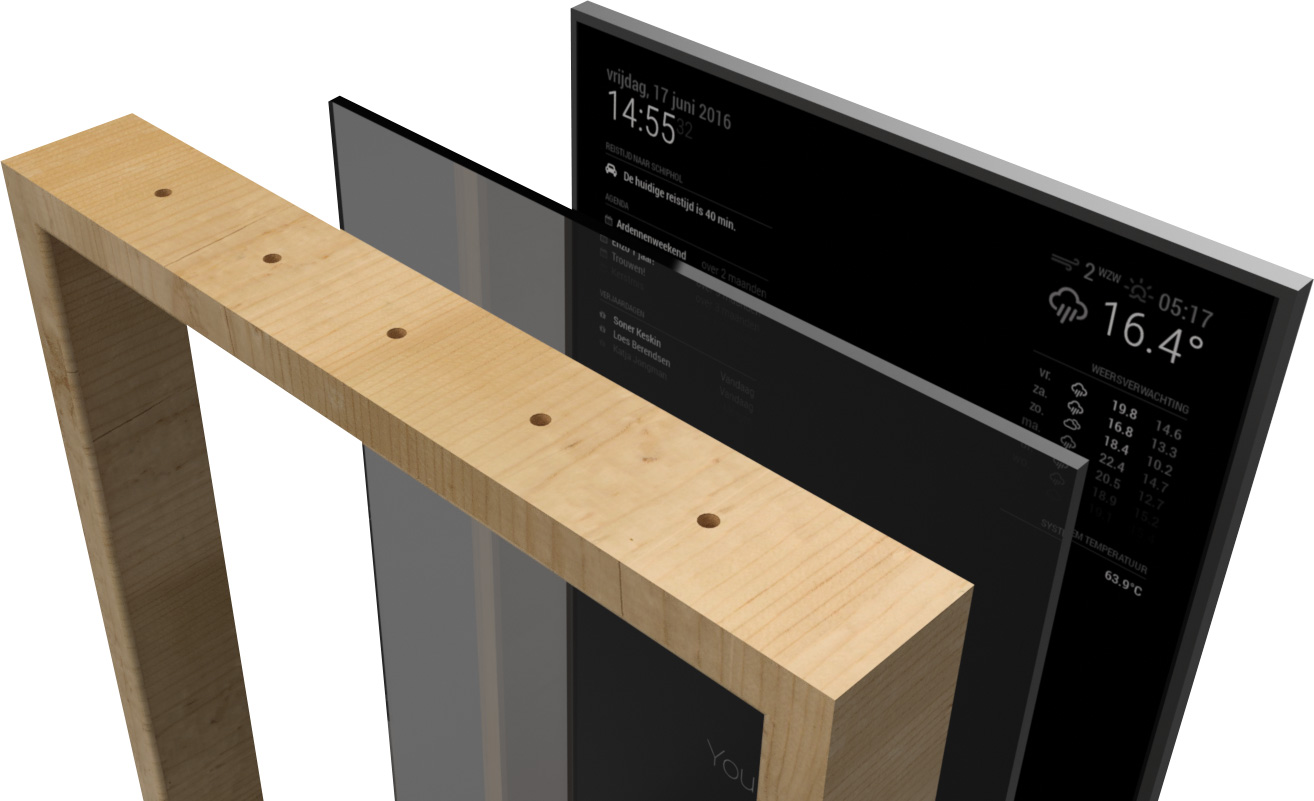

- RASPBERRY PI MAGIC MIRROR COMPONENT FULL
- RASPBERRY PI MAGIC MIRROR COMPONENT ANDROID
- RASPBERRY PI MAGIC MIRROR COMPONENT SOFTWARE
Note: Some people have complained about the final finish using this.Ģ) Something to run the display on. Acrylic: A cheaper 1-3 mm Acrylic two way mirror starting at $27 for a 12"x24" piece. Glass: 1/4" thick two way mirror glass - starting at $89.99 for a 12"x24" piece To build your own smart mirror, you will need some hardware:ġ) A Glass or Acrylic two-way mirror where one side reflects light and has the appearance of a mirror and the other transmits light through it.
RASPBERRY PI MAGIC MIRROR COMPONENT FULL
If he needs to know something that’s not in one of the widgets, the mirror also can access Android’s built-in voice search features.īraun hasn’t yet posted a full how-to with the complete bill of materials, but we estimate a setup like this would cost upwards of $500, with the monitor and the glass as the main expenses. Like the examples below, there’s no touchscreen capability - and who would want all those fingerprints greasing up the mirror anyway? - but Braun’s idea was to create a UI that presents a quick-glance overview of information and doesn’t require much interaction. The screen shows widgets like time, weather and headlines, and Braun says it can be expanded to include basically anything that has a Google Now card.
RASPBERRY PI MAGIC MIRROR COMPONENT ANDROID
It’s built from a super-thin Asus monitor behind two-way glass, with a Fire TV HDMI streaming stick running a custom Android application. We’re forever grateful to all the content creators who make videos of their Raspberry Pi projects.One of the slickest-looking examples was just posted earlier this month by Google employee Max Braun. Looking for more Raspberry Pi videos from Brian? Check out his Raspberry Pi playlist and be sure, as always, to subscribe to his channel. Find a whole host of such third-party add-ons in this GitHub wiki.

As Brian Cotter explains in the video above, he used AgP42’s MMM-iFrame-Ping and eouia’s MMM-GooglePhotos to integrate YouTube videos and photographs into his magic mirror.Īnd of course that’s not all! Other magic mirror add-ons let you implement 3D gesture detection or display international currency values, Google Fit totals, and more. The modular nature of MagicMirror² lets third-party developers easily bring their own ideas to the platform.
RASPBERRY PI MAGIC MIRROR COMPONENT SOFTWARE
The software most people use for setting up their magic mirror is MagicMirror², a free, group-maintained open-source platform created by Michael Teeuw.Īnd you know what open-source means… Third-party add-ons! Once it’s set up, you have yourself both a mirror and a notification board complete with calendar events, memos, and more. The basic homemade model consists of a screen (usually an old computer monitor or flatscreen TV), a piece of two-way mirrored acrylic or glass, a frame, and a Raspberry Pi. While big-brand smart mirrors cost upwards of a bajillion dollars, a homemade magic mirror costs pennies in comparison. The popularity of magic mirrors has grown massively over the past few years, thanks to how easy it’s become to find cheap displays and great online tutorials. Mention Raspberry Pi to the uninitiated, and they’ll probably ask if it’s “that green thing people use for game emulation and smart mirrors?”. Bring YouTube videos, Google Photos, and more to your magic mirror, with third-party modules and the MagicMirror² open-source software platform.


 0 kommentar(er)
0 kommentar(er)
